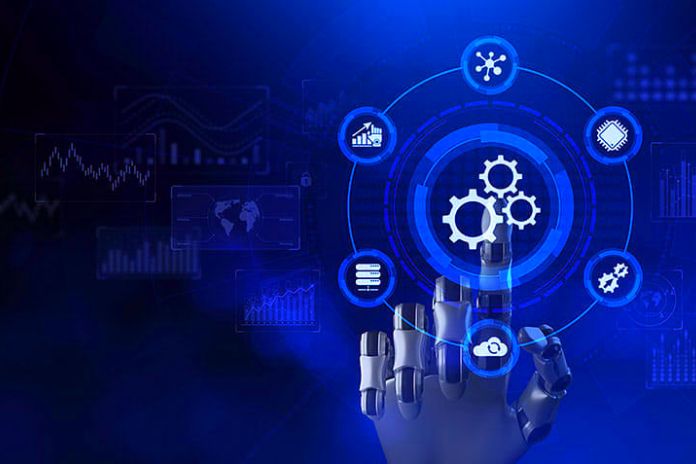Automation System: The use of technology in business management is increasingly intense. With the advancement of digital transformation, the only possible path to remain competitive is to invest in new tools, RPAs, and digital solutions.
After all, this strategy strengthens the company’s operations, making it more agile, productive, and efficient. In addition, intelligent technology continuously improves the user experience, increasing customer satisfaction, and loyalty.
In this context, a trend consolidated within companies is the investment in the automation system. In practice, this type of system revolutionizes processes, increases productivity, and boosts the performance of the team and the company.
This technological innovation automates processes that previously depended on human intervention. Now, the automation system can carry out many tasks autonomously, greatly enhancing the company’s productivity.
One of the information technology concepts that has gained prominence in this field is Robotic Process Automation, abbreviated as RPA. According to Gartner projections, RPA technology spending will reach $2.4 billion in 2022.
Knowing the importance of this trend, we prepared an article that presents the concept of automation systems and the leading applications in different market segments. Want to learn more about RPA innovation and usage? Keep reading this post!
What Is An Automation System?
An automation system consists of a set of software and hardware. Together, they allow computer systems, network devices, or machines to function automatically, being pre-engineered. Thus, they dispense with the need for a human operator to provide inputs and instructions for each operation.
The use of automated operations brings a series of benefits to companies. In addition to reducing the time and cost of work, the automation system guarantees greater precision in executing activities.
Automated operations are built into different applications. Examples are:
- Control and monitoring systems;
- data security applications;
- Factory automation systems.
What Are The Types Of Automation?
Using an automation system increases the availability, performance, reliability, and quality of services provided by companies.
Before thinking about adopting this type of tool, it is essential to know that automation systems can be classified into three basic types:
Fixed Automation
In this system, automation is applied through specialized equipment focusing on fixed sequences of assembly and processing operations. The operations within the line for heavy automation are typically simple, driven by simple linear and rotational motions. In exceptional cases, the two methods of movement can be combined.
It is precisely the integration and coordination of many of these operations in one piece of equipment that makes the system complex. The fixed automation system has three main characteristics:
- The high initial investment for custom-engineered equipment;
- High production rates;
- The relative difficulty in managing product changes.
Examples of fixed automation are mechanized assembly systems and machining transfer lines.
Programmable Automation
Also known as flexible automation, this type of system is designed with the ability to change operating sequences, enabling the accommodation of varied product configurations.
Within the programmable automation system, the operating sequences are controlled by a program based strictly on the instructions encoded. New programs can be included in the equipment for producing new products.
Programmable RPA stands out in four ways:
- High investment in equipment for general use;
- Low production rates compared to fixed automation;
- Flexibility to deal with changes in product configuration;
- Ideal for batch production.
While the programmable automation system allows for changes in operations, these changes are often not very simple.
To produce each new batch of a different product, the system must be reprogrammed with machine instructions corresponding to the new product. and
The physical setup of the machine is time-consuming:
- Tools have to be loaded.
- Accessories fixed to the machine table.
- Settings also have to be done.
Therefore, this automation system is recommended for low and medium-volume production. Parts or products are usually made in batches.
Examples of programmable automation systems are numerically controlled machine tools and industrial robots.
Flexible Automation
This type of system is an improved version of programmable automation.
The flexible automation system makes it possible to produce various parts with virtually no time wasted when switching from one product to another. In addition, the same agility can be obtained in reprogramming the system and changing the physical configuration of the machine, with adjustments to tools or accessories made and quickly.
In this way, the flexible automation system allows the production of multiple product combinations and schedules rather than requiring separate batches.
In this system, it is essential to highlight four characteristics:
- High investment for a customized engineering system;
- Continuous production of different products;
- Average production rates;
- Flexibility to handle variations in product design.
What Is Robotic Process Automation?
According to Forrester Research, it is estimated that by 2021 more than 5 million bots will be put into production at large companies.
Robotic Process Automation (RPA) is nothing more than a bot. We can define it as a technological application focused on process automation using robot software.
This solution offers greater agility and productivity to companies. RPA-based robots are programmed to perform repetitive, operational, and unimportant company tasks without human intervention.
Activities are performed on the computer by the robot as if it were a regular user. The bot collects any information on a website or application and exchanges information with another system, eliminating the need for integration.
RPA robots are automated, taking as a reference the possible sequence of clicks and commands that a user would adopt to perform the activity.
Also Read: Artificial Intelligence: Understand Its Impact On Business

